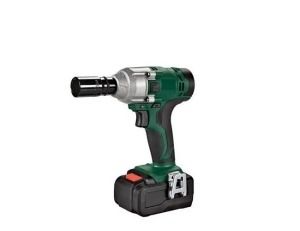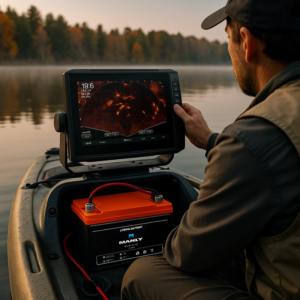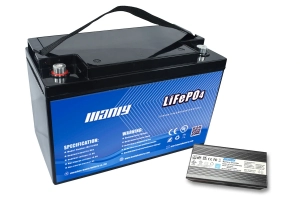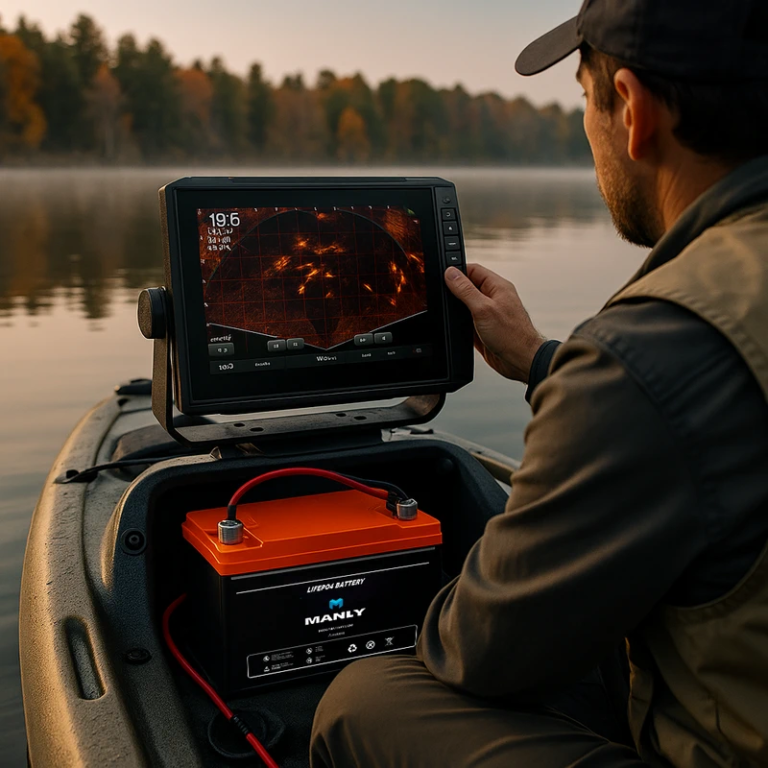HangZhou Asian Games 2023: Revolution der Roboterhunde
Inhaltsverzeichnis
- HangZhou Asian Games 2023: Revolution der Roboterhunde
- Roboterhunde steigern die Effizienz bei den HangZhou Asian Games 2023
- Zukunft des Sports: Wie Roboterhunde bei den HangZhou Asian Games die Show stehlen
- Lithium-Ionen vs. Bleisäure: Welche Batterie dominiert in der modernen Technologie?
- Entschlüsselung von Lithium-Ionen-Batterien: Wichtige Klassifizierungen
- MANLY-Batterie
- Abschluss

Roboterhunde steigern die Effizienz bei den HangZhou Asian Games 2023
Robotic dogs, precision-manufactured and encapsulating numerous high-tech capabilities, have marked a distinctive presence in their operation. Initially, they employ a suite of sensor equipment, including LIDAR and cameras, to real-time collect data on their own location and that of the athletes, thus achieving autonomous navigation and positioning. Subsequently, equipped internally with advanced artificial intelligence modules, the robotic dogs can analyze athletes' postures, providing accurate feedback and support. Finally, they possess efficient battery and power systems, ensuring a stable working status throughout the competition.Moreover, these robotic dogs are quadruped robots, meaning they traverse on four legs rather than wheels. The advantage herein is that they can maintain stability on uneven ground and adapt to various terrains and obstacles. This marks the first global event to utilize quadruped robots; previously, many robots, such as those delivering water and towels to athletes at the 2018 PyeongChang Winter Olympics, were wheeled.Furthermore, these robotic dogs are fitted with fixtures on their backs to grip discuses, capable of bearing standard discuses of 1 to 2 kilograms, specially designed for the HangZhou Asian Games. Once a discus is thrown, a robotic dog races to staff located 50 meters away, who then affix the discus to the dog’s back, allowing it to return to the athlete. Consequently, athletes neither have to retrieve their discuses nor wait for staff to deliver them, saving time and energy. With a running speed of approximately 3.5 meters per second, a robotic dog can cover a distance of roughly 7200 meters during a competition, equivalent to 18 laps of a track field!This innovative point is not limited to the athletic field but also provides services in the badminton court. Intriguingly, videos have shown an athlete using a remote control to direct these robotic dogs in delivering bottled water.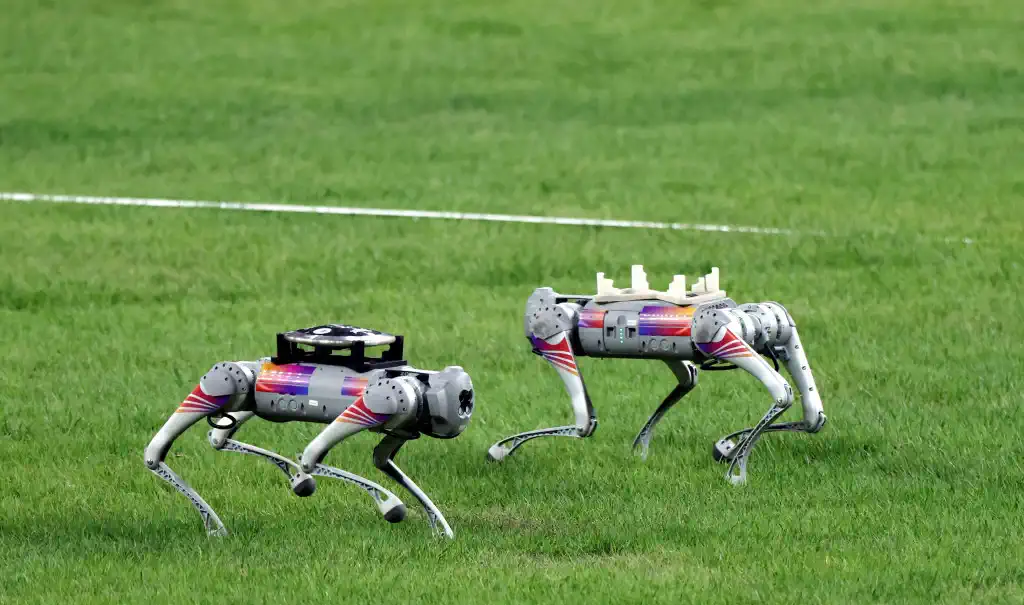
Zukunft des Sports: Wie Roboterhunde bei den HangZhou Asian Games die Show stehlen
The HangZhou Asian Games’ pioneering use of robotic dogs to retrieve discuses can undoubtedly be described as groundbreaking. These robotic dogs not only heightened the efficiency but also added an element of entertainment to the games. Whenever they finish a task, they automatically "lie down" by the field, poised for the next instruction. Such innovation underscores the vast potential of technology in sporting events, bestowing the HangZhou Asian Games with a unique charm.Subsequently, the track and field events of the HangZhou Asian Games captivated the attention of media and audiences worldwide. The focus wasn’t solely because it's one of the critical competitions of the HangZhou Asian Games, but notably due to the emergence of this robotic dog, which became a spotlight on the field. Some netizens commented, "The HangZhou Asian Games are always up for surprises!" This novel method of transportation reflects the profound impact of technology on sports.Furthermore, the debut of the robotic dog undeniably added a splash of color to the HangZhou Asian Games. This is not just a showcase of technological prowess but also a glimpse into the future of sports. It is foreseeable that, in the days to come, robotic dogs will play an increasingly significant and broader role across various sectors. Whether in sports or daily life, robotic dogs are set to become invaluable allies and reliable companions for humans.For the realm of sports, introducing robotic dogs propels the advancement of sports technology, enhancing athletes' competitive levels. Through intelligent sensing and analysis systems, these dogs can assist athletes in better understanding their movements and techniques, potentially resulting in improved competition outcomes. In daily life, robotic dogs can not only offer companionship but also deliver various conveniences, aiding individuals in adapting to the fast-paced modern societal rhythm.By examining the coverage and description of the HangZhou Asian Games’ robotic dogs, we can discern not just the role and advantages of these robotic dogs in competitions, but also the transformative influence of technology in sports. Robotic dogs serve as more than just platforms showcasing technological might; they are intelligent companions and aids in sports. The deployment of artificial intelligence and robotic technology equips these dogs with the ability for intelligent sensing and communication, making them potent allies in work and life.Lastly, as technology continues to evolve and progress, future robotic dogs are anticipated to boast even more functionalities and application scenarios, bringing added convenience and joy to human life. The fusion of humanity and technology promises a brighter future – a vision we collectively look forward to and strive towards.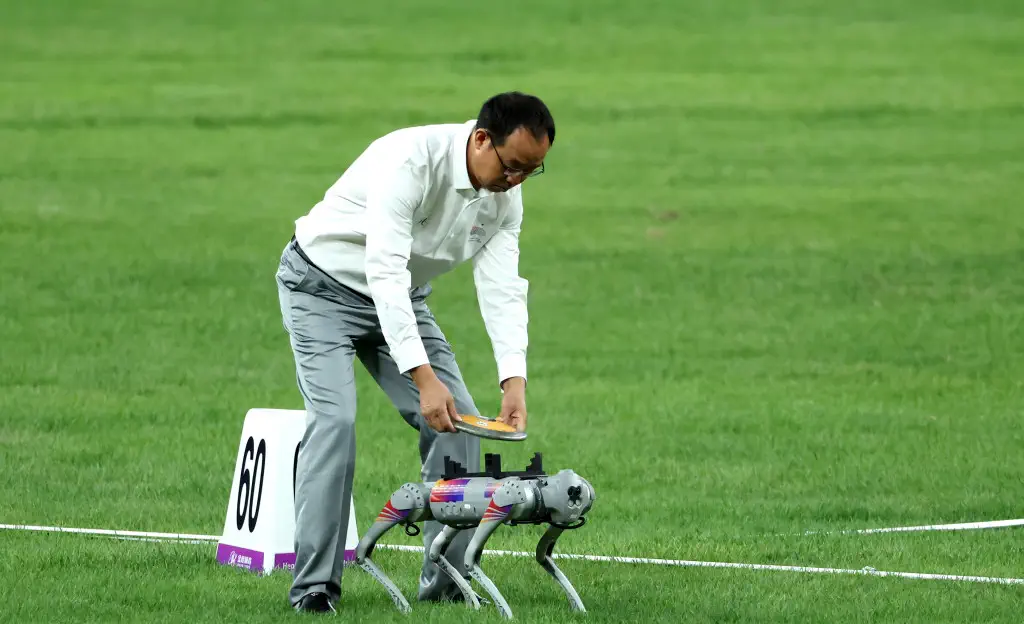
Lithium-Ionen vs. Bleisäure: Welche Batterie dominiert in der modernen Technologie?
In 2023, the HangZhou Asian Games emerged as a paradigm of the integration of technology and sports. Beyond the intense athletic competition, the HangZhou Asian Games also unveiled an eye-catching technological achievement – the use of robotic dogs. These robotic dogs played a unique role on the competition field, and notably, one standout feature was their reliance on advanced lithium battery technology for power.Instead of conventional internal combustion engines or cable power sources, the robotic dogs at the HangZhou Asian Games relied on lithium batteries. Lithium batteries are high-energy-density batteries, and due to their lightweight and efficient attributes, they're extensively used across various applications, ranging from smartphones to electric vehicles. This battery technology not only supplied ample power but also boasted exceptional durability, catering to the diverse needs on the HangZhou Asian Games' venues.In the past, robotic dogs typically relied on lead-acid batteries as their primary power source. While lead-acid batteries are stable, their limited capacity and heavier weight constrained the mobility and efficiency of the robotic dogs. However, with continuous technological breakthroughs, the adoption of lithium-ion batteries has brought about transformative changes for robotic dogs.Lithium-ion batteries are renowned for their high energy density, lightweight properties, and rechargeable features, enabling robotic dogs to excel on the Asian Games competition field. This battery technology offers extended battery life, faster charging speeds, and increased power output, allowing robotic dogs to operate efficiently throughout competitions.Now, as the shift from lead-acid, nickel-cadmium, or nickel-metal hydride batteries to lithium-ion ones is trending, what distinct characteristics do lithium-ion batteries possess?- Sie haben ein höheres Energie-Gewichts-Verhältnis und ein höheres Energie-Volumen-Verhältnis.
- Ihre Spannung ist erhöht, wobei die Spannung einer einzelnen Lithium-Ionen-Zelle 3,6 V beträgt, was ungefähr der Spannung von drei in Reihe geschalteten Nickel-Cadmium- oder Nickel-Metallhydrid-Batterien entspricht.
- Sie weisen eine minimale Selbstentladung auf, was eine längere Lagerung ermöglicht, was eine ihrer herausragendsten Eigenschaften darstellt.
Entschlüsselung von Lithium-Ionen-Batterien: Wichtige Klassifizierungen
Typically, when we discuss power lithium batteries, the most commonly mentioned are lithium iron phosphate batteries, lithium manganese oxide batteries, lithium cobalt oxide batteries, and ternary lithium-ion batteries. So, what are the different classifications of lithium-ion batteries?zuerstBasierend auf den internen Materialien können Lithium-Ionen-Batterien im Allgemeinen in zwei Hauptkategorien unterteilt werden.- Lithium-Metall-Batterien: Diese Batterien verwenden normalerweise Mangandioxid als positives Elektrodenmaterial und metallisches Lithium oder seine Legierung als negatives Elektrodenmaterial. Sie verwenden auch eine nichtwässrige Elektrolytlösung.
- Lithium-Ionen-Batterien: These batteries often employ a lithium alloy metal oxide as the positive electrode material, graphite for the negative electrode, and a non-aqueous electrolyte. Although lithium metal batteries boast a high energy density - theoretically reaching 3860 watts/kg - their unstable nature and inability to be recharged prevent them from serving as reusable power lithium batteries. AndererseitsAufgrund ihrer Wiederaufladbarkeit werden Lithium-Ionen-Batterien stark als Hochleistungs-Lithium batterien angepriesen. Die Kombination mit verschiedenen Elementen führt jedoch zu unterschiedlichen Leistungen aller positiven Elektrodenmaterialien, was zu intensiven Debatten über den besten Weg in die Zukunft innerhalb der Branche führt.
MANLY-Batterie
MANLY Battery: Der Gipfel der Batterieherstellung in China Established in China's vibrant core, MANLY Battery stands tall as the nation's foremost wholesale Batterielieferant, mit über 13 Jahren herausragender Expertise. Unser Vermächtnis, geprägt von unerschütterlichem Engagement und unübertroffener Exzellenz, festigt unsere Position im Bereich der Batterieproduktion.Ein Produktions-Kraftpaket: Daily, our manufacturing lines produce an impressive 6MWh of battery cells and packs. Complementing this, we assemble upwards of 3,000 batteries daily – a testament to our dedication to volume without forsaking quality. Located over a massive 65,000 square meter expanse, our advanced manufacturing facilities anchor in China's top hubs: Shenzhen, Dongguan, and Huizhou.Vielfältige Batterielösungen von MANLY:Wir präsentieren eine umfangreiche Sammlung von LiFePO4/Lithium-Ionen-Batterien von 6 V bis 72 V, die sorgfältig für eine Vielzahl von Anwendungen hergestellt wurden:- Speicherung von Solarenergie
- Notstromversorgung für Privathaushalte und Industrie
- High-Tech-Roboter, darunter ein Roboterhund in Militärqualität
- Unterstützung für Basisstationen
- Umweltfreundliche Solarstraßenlaternen
- Konsistente unterbrechungsfreie Stromversorgungseinheiten (USV).
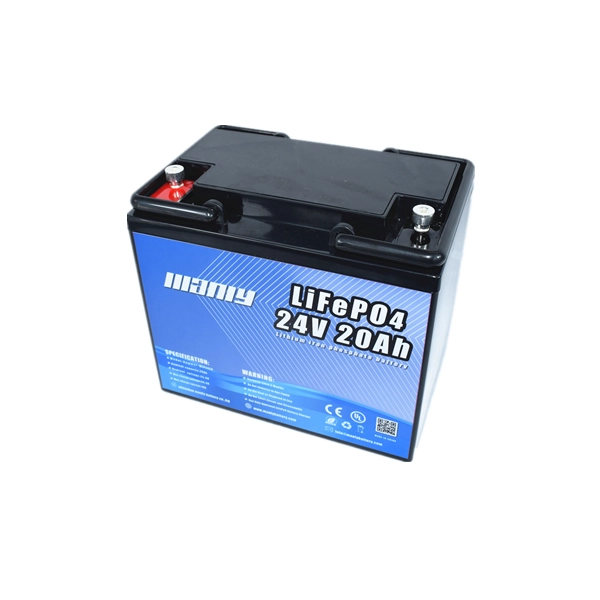 Individualisierung vom Feinsten:Ihre individuellen Anforderungen sind unser Gebot. Unsere maßgeschneiderte Batteriefertigung bietet eine beispiellose Personalisierung in Bezug auf Spannung, Größe, Design und mehr – um sicherzustellen, dass jede Einheit den Kundenanforderungen entspricht.International anerkannte Produkte:Das Vertrauen in MANLY wird durch globale Zertifizierungen wie UN38.3, IEC62133, UL und CE verankert. Unsere Auszeichnungen spiegeln unser Engagement für höchste Standards wider.Ein Jahrzehnt Vertrauen mit Garantie:Das MANLY-Versprechen wird durch eine robuste 10-Jahres-Garantie unterstrichen, die unser Vertrauen in die Langlebigkeit unserer Produkte widerspiegelt.Sicherheit und Leistung kombiniert:Über die erstklassige Leistung hinaus legen unsere Batterien besonderen Wert auf die Sicherheit des Benutzers, mit Funktionen wie Kurzschlussschutz, Überladeschutz und Stromprüfung. Selbst nach intensiven Stößen funktionieren sie einwandfrei und sind mit vielseitigen Anschlussanpassungsmöglichkeiten ausgestattet.Zuverlässigkeit auch im Extremfall:
MANLY's LiFePO4 batteries surpass other lithium variants, delivering consistently between -20°C to 75°C (-4°F to 167°F), making them ideal for tough conditions. Yet, for optimal longevity, we suggest adhering to our recommended temperature guidelines during charging.Erhöhte Energieeffizienz:Warum Kompromisse? Erleben Sie den Gipfel der Effizienz mit unseren LiFePO4-Batterien mit einer Energieausnutzungsrate von 95 %. Unsere Batterien übertreffen herkömmliche Blei-Säure-Batterien, deren Spitzenwert bei etwa 70 % liegt, und sorgen für schnelles Laden und minimale Energieverschwendung.Verbesserte Batterieinteraktionen:Mit unseren Akkus wird das Benutzererlebnis neu definiert, ergänzt durch moderne Annehmlichkeiten wie Bluetooth-Synchronisierung und eine intuitive Ladestandsanzeige.
Individualisierung vom Feinsten:Ihre individuellen Anforderungen sind unser Gebot. Unsere maßgeschneiderte Batteriefertigung bietet eine beispiellose Personalisierung in Bezug auf Spannung, Größe, Design und mehr – um sicherzustellen, dass jede Einheit den Kundenanforderungen entspricht.International anerkannte Produkte:Das Vertrauen in MANLY wird durch globale Zertifizierungen wie UN38.3, IEC62133, UL und CE verankert. Unsere Auszeichnungen spiegeln unser Engagement für höchste Standards wider.Ein Jahrzehnt Vertrauen mit Garantie:Das MANLY-Versprechen wird durch eine robuste 10-Jahres-Garantie unterstrichen, die unser Vertrauen in die Langlebigkeit unserer Produkte widerspiegelt.Sicherheit und Leistung kombiniert:Über die erstklassige Leistung hinaus legen unsere Batterien besonderen Wert auf die Sicherheit des Benutzers, mit Funktionen wie Kurzschlussschutz, Überladeschutz und Stromprüfung. Selbst nach intensiven Stößen funktionieren sie einwandfrei und sind mit vielseitigen Anschlussanpassungsmöglichkeiten ausgestattet.Zuverlässigkeit auch im Extremfall:
MANLY's LiFePO4 batteries surpass other lithium variants, delivering consistently between -20°C to 75°C (-4°F to 167°F), making them ideal for tough conditions. Yet, for optimal longevity, we suggest adhering to our recommended temperature guidelines during charging.Erhöhte Energieeffizienz:Warum Kompromisse? Erleben Sie den Gipfel der Effizienz mit unseren LiFePO4-Batterien mit einer Energieausnutzungsrate von 95 %. Unsere Batterien übertreffen herkömmliche Blei-Säure-Batterien, deren Spitzenwert bei etwa 70 % liegt, und sorgen für schnelles Laden und minimale Energieverschwendung.Verbesserte Batterieinteraktionen:Mit unseren Akkus wird das Benutzererlebnis neu definiert, ergänzt durch moderne Annehmlichkeiten wie Bluetooth-Synchronisierung und eine intuitive Ladestandsanzeige.
